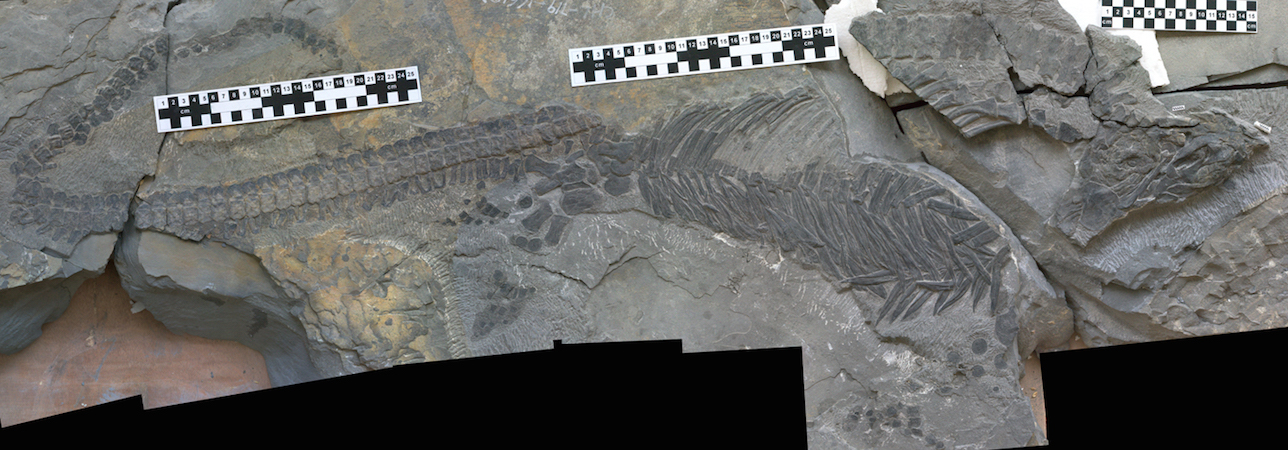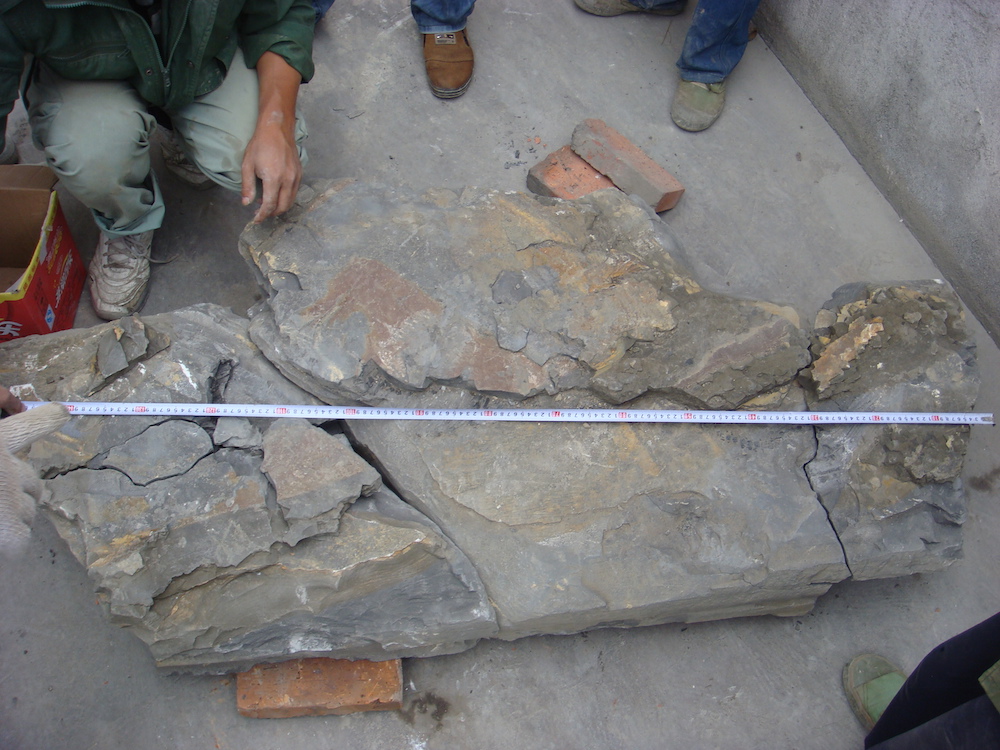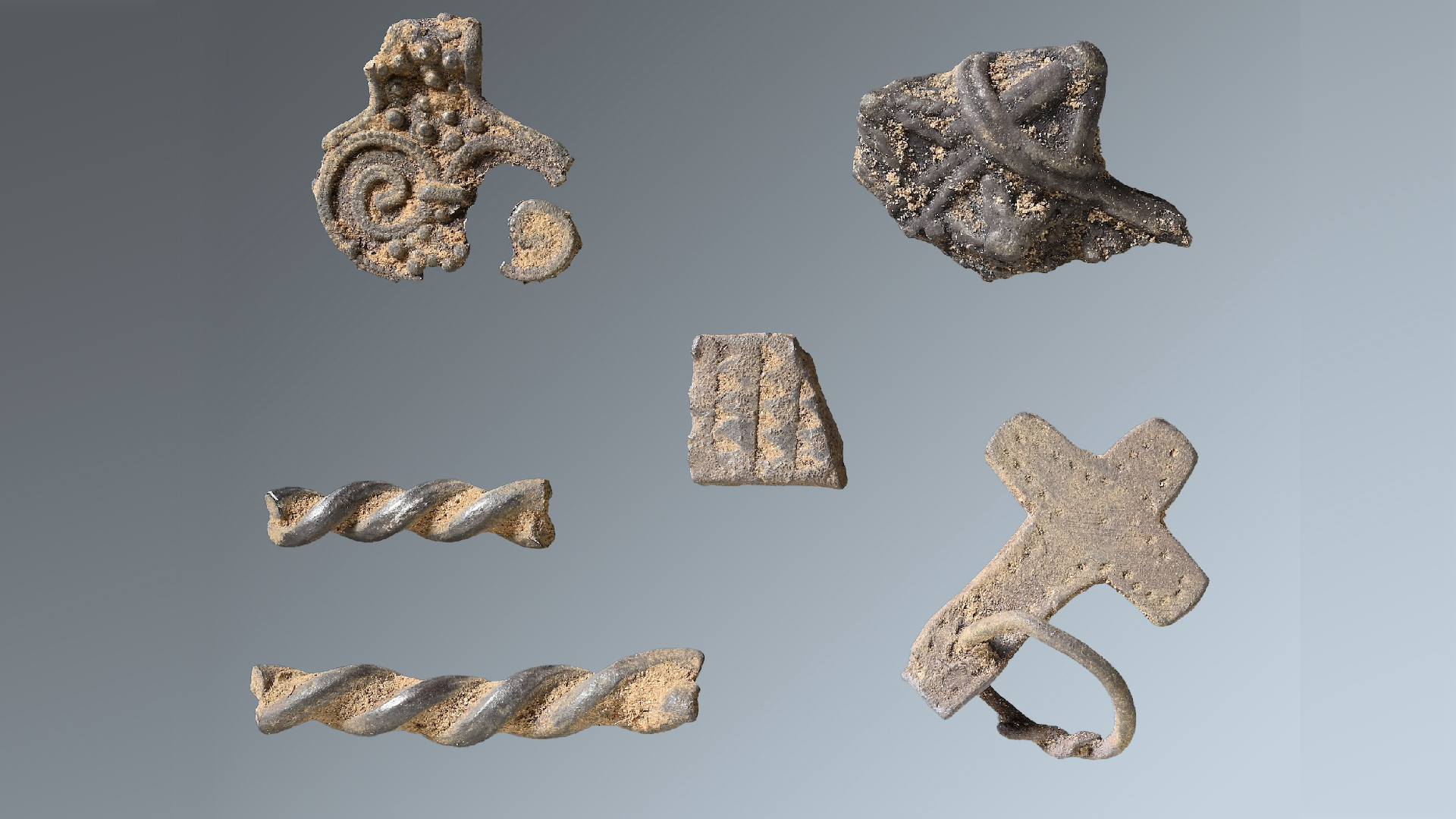Short-Snouted Sea Monsters Evolved Rapidly After Wipeout

The discovery of a short-snouted, oceangoing reptile with a whip-like tail suggests that some marine reptiles evolved quickly (geologically speaking) after a mass extinction 250 million years ago, a new study finds.
The finding turns an old theory on its head, showing that early marine reptiles didn't evolve slowly after the end-Permian extinction. The extinction wiped out about 96 percent of all marine species, largely due to climate change, volcanic eruptions and rising sea levels, the researchers said.
The newfound specimen from China is an early ichthyosaur, a marine reptile that looks a bit like a dolphin. Its discovery suggests that early ichthyosaurs evolved rapidly within the first million years of their evolution, during the early Triassic, the researchers wrote in the study. This is in contrast to the millions of years that researchers originally thought it took for these sea creatures to evolve. [In Images: Graveyard of Ichthyosaur Fossils Found in Chile]

However, this particular, roughly 5.2-foot-long (1.6 meters) ichthyosaur is something of a black sheep, lacking the typical long snout and powerful tail fins of its kin, the researchers said.
In addition, most ichthyosaurs had conical teeth that helped them hunt in the ocean, but the newfound ichthyosaur was toothless, and may have used its short snout to create pressure to suck up food like a syringe, the researchers said.
In fact, the weird anatomy inspired the researchers to name the beast Sclerocormus parviceps. The genus name combines the Greek words "skleros" and "kormos" to call attention to its "stiff trunk." The species name comes from the Latin words "parvus" and "caput," which translate into "small skull."
"Sclerocormus tells us that ichthyosauriforms evolved and diversified rapidly at the end of the lower Triassic period," Olivier Rieppel, The Field Museum's Rowe Family Curator of Evolutionary Biology, said in a statement. "We don't have many marine reptile fossils from this period, so this specimen is important because it suggests that there's diversity that hasn't been uncovered yet."
Sign up for the Live Science daily newsletter now
Get the world’s most fascinating discoveries delivered straight to your inbox.
S. parviceps' discovery also shows that evolution isn't always predictable, he said.

"Darwin's model of evolution consists of small, gradual changes over a long period of time, and that's not quite what we're seeing here," Rieppel said. "These ichthyosauriforms seem to have evolved very quickly, in short bursts of lots of change, in leaps and bounds."
Findings like that of S. parviceps show that life can respond to massive environmental pressures after mass extinctions decimate the planet. These discoveries may even inform scientists about the sixth mass extinction that some experts say we're entering now. [Image Gallery: Photos Reveal Prehistoric Sea Monster]
"We're in a mass extinction right now, not one caused by volcanoes or meteorites, but by humans," Rieppel said. "So while the extinction 250 million years ago won't tell us how to solve what's going on today, it does bear on the evolutionary theory at work. How do we understand the recovery and rebuilding of a food chain, of an ecosystem? How does that get fixed, and what comes first?"
The study was published online today (May 23) in the journal Scientific Reports.
Follow Laura Geggel on Twitter @LauraGeggel. Follow Live Science @livescience, Facebook & Google+. Original article on Live Science.

Laura is the archaeology and Life's Little Mysteries editor at Live Science. She also reports on general science, including paleontology. Her work has appeared in The New York Times, Scholastic, Popular Science and Spectrum, a site on autism research. She has won multiple awards from the Society of Professional Journalists and the Washington Newspaper Publishers Association for her reporting at a weekly newspaper near Seattle. Laura holds a bachelor's degree in English literature and psychology from Washington University in St. Louis and a master's degree in science writing from NYU.
